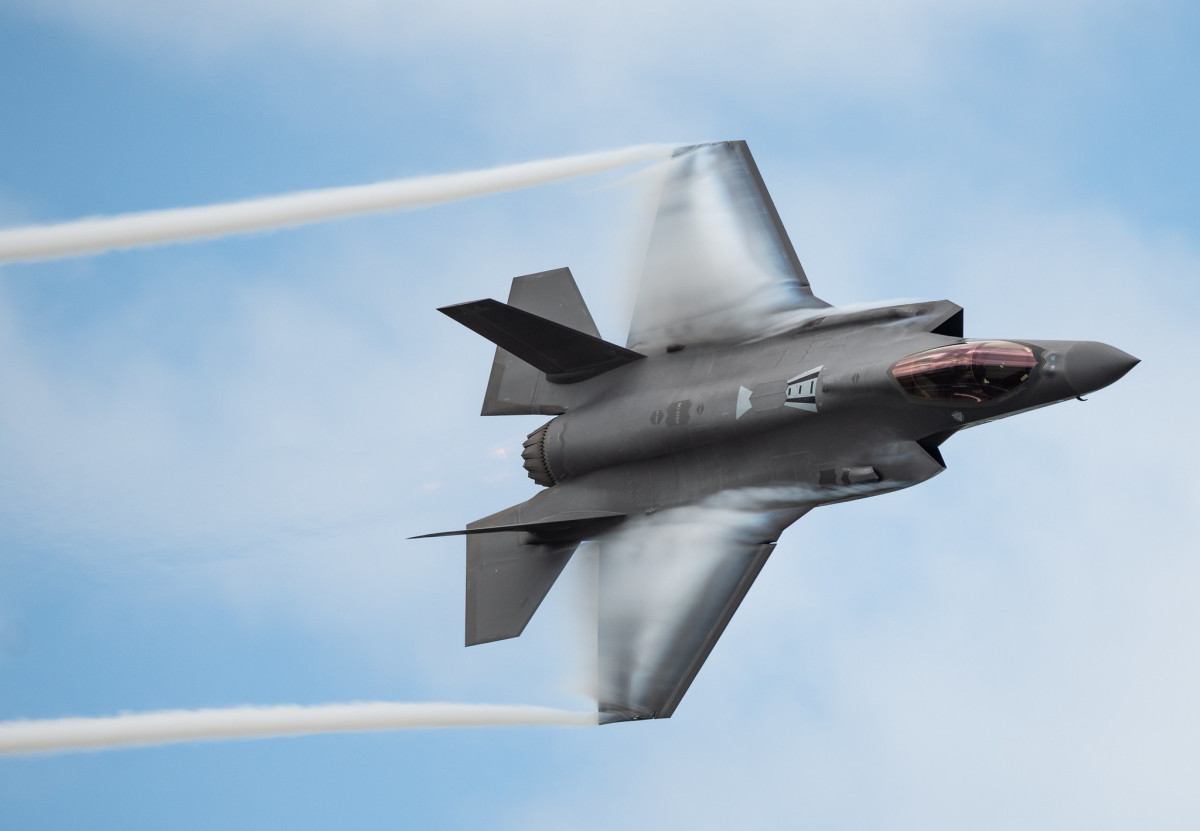

The Navy and Marine Corps variants of the vaunted F-35 Joint Strike Fighter cannot maintain supersonic speeds without sustaining significant structural damage that compromises its stealth capabilities — and the Pentagon is reportedly just fine with that.
Defense News reports that the major deficiency — in which F-35B and F-35C variants experienced damage to their stealth coating after firing their afterburners — will go unaddressed by the F-35 Joint Program Office despite its risk of undermining the aircraft’s critical stealth systems.
“This issue was closed on December 17, 2019 with no further actions and concurrence from the U.S. services,” the F-35 Joint Program Office told Defense News in a statement. “The [deficiency report] was closed under the category of ‘no plan to correct,’ which is used by the F-35 team when the operator value provided by a complete fix does not justify the estimated cost of that fix.”
As previously reported by Defense News, this deficiency was first discovered in November 2011 after a pair of F-35s sustained “bubbling [and] blistering” of its stealth coating after flying at speeds of Mach 1.3 and Mach 1.4 near their maximum service ceiling of 50,000 feet.
Subsequent tests the following December revealed “thermal damage” that reportedly compromised the overall integrity of both the inboard horizontal tail and tail boom, per Defense News.
But while the F-35 JPO told Defense News that a potential solution for the problem “would require a lengthy development and flight testing of a material coating that can tolerate the flight environment for unlimited time while satisfying the weight and other requirements of a control surface,” that solution is clearly untenable for the Pentagon.
“Instead, the issue is being addressed procedurally by imposing a time limit on high-speed flight,” the JPO told Defense News.
Indeed, Defense News previously reported that the deficiencies induced the Pentagon to institute limits on how long the aircraft can fire their afterburners, so far that the F-35B and the F-35C can only safely fly at Mach 1.3 for 40 seconds and 50 seconds, respectively, without risking damage.
As Task & Purpose previously noted, aviators often resort to sustained afterburners in specific scenarios; for the F-35, that means evading incoming enemy fighters or anti-aircraft missiles. Similarly, stealth has been a major selling point for the F-35 since its inception.
It appears now, however, that aviators will simply be forced to choose between speed and stealth, a choice that could prove fatal on the battlefield — and with the Pentagon growing increasingly frustrated with the F-35’s laundry list of deficiencies, military planners are willing to take that risk.
